Private equity and healthcare firm behavior: Evidence from ambulatory surgery centers
- PMID: 37657144
- PMCID: PMC10528209
- DOI: 10.1016/j.jhealeco.2023.102801
Private equity and healthcare firm behavior: Evidence from ambulatory surgery centers
Abstract
Healthcare firms regularly seek outside capital; yet, we have an incomplete understanding of external investor influence on provider behavior. We investigate the effects of private equity investment, divestment, and an initial public offering (IPO) on ambulatory surgery centers (ASCs). Throughput is unchanged while charges grow by up to 50% for the same service mix. Affected ASCs witness declines in privately insured cases and rely more on Medicare business. Private equity increases physician ASC ownership stakes, and both simultaneously divest when the ASC is sold. Our findings appear more consistent with private equity influencing the financing of ASCs, rather than treatment approaches.
Keywords: Ambulatory surgery centers; Outpatient surgery; Physician ownership; Private equity.
Copyright © 2023 Elsevier B.V. All rights reserved.
Figures


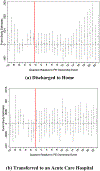




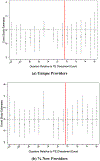

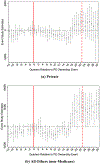
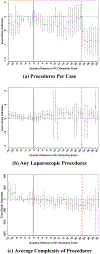

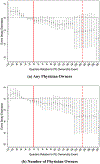
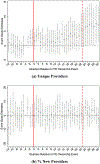






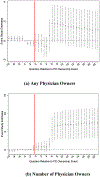
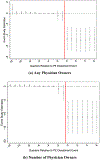


Similar articles
-
Saga of payment systems of ambulatory surgery centers for interventional techniques: an update.Pain Physician. 2012 Mar-Apr;15(2):109-30. Pain Physician. 2012. PMID: 22430649
-
Ambulatory surgery centers--current legal issues 2004 (Part 2).Health Care Law Mon. 2004 May:3-10. Health Care Law Mon. 2004. PMID: 15188633
-
Ambulatory surgery centers and interventional techniques: a look at long-term survival.Pain Physician. 2011 Mar-Apr;14(2):E177-215. Pain Physician. 2011. PMID: 21412380 Review.
-
Do all outpatient spine surgeries cost the same? Comparison of economic outcomes data from a state-level database for outpatient lumbar decompression performed in an ambulatory surgery center or hospital outpatient setting.J Neurosurg Spine. 2021 Aug 20;35(6):787-795. doi: 10.3171/2021.2.SPINE201820. Print 2021 Dec 1. J Neurosurg Spine. 2021. PMID: 34416720
-
Interventional techniques in ambulatory surgical centers: a look at the new payment system.Pain Physician. 2007 Sep;10(5):627-50. Pain Physician. 2007. PMID: 17876360 Review.
Cited by
-
Trends in Private Equity Owned Otolaryngology Practice Clinician Distribution.OTO Open. 2025 Apr 11;9(2):e70112. doi: 10.1002/oto2.70112. eCollection 2025 Apr-Jun. OTO Open. 2025. PMID: 40224294 Free PMC article.
-
Private Equity Acquisition of Gastroenterology Practices and Colonoscopy Price and Quality.JAMA Health Forum. 2025 Jun 7;6(6):e251476. doi: 10.1001/jamahealthforum.2025.1476. JAMA Health Forum. 2025. PMID: 40540284 Free PMC article.
-
Changes in Payer Mix Associated With Private Equity Acquisition of Ophthalmology Practices.JAMA Netw Open. 2025 May 1;8(5):e2512629. doi: 10.1001/jamanetworkopen.2025.12629. JAMA Netw Open. 2025. PMID: 40434776 Free PMC article.
-
Hospital behavior over the private equity life cycle.J Health Econ. 2024 Sep;97:102902. doi: 10.1016/j.jhealeco.2024.102902. Epub 2024 May 29. J Health Econ. 2024. PMID: 38861907
-
Fitting in? Physician practice style after forced relocation.Health Serv Res. 2024 Aug;59(4):e14340. doi: 10.1111/1475-6773.14340. Epub 2024 Jun 17. Health Serv Res. 2024. PMID: 38886564 Free PMC article.
References
-
- Agrawal Ashwini, and Tambe Prasanna. 2016. “Private Equity and Workers’ Career Paths: The Role of Technological Change.” Review of Financial Studies, 29 (9): 2455–2489.
-
- American Hospital Association. 2020. TrendWatch Chartbook. Available at https://www.aha.org/system/files/media/file/2020/10/TrendwatchChartbook-....
-
- Antoni Manfred, Maug Ernst, and Obernberger Stefan. 2019. “Private Equity and Human Capital Risk Journal of Financial Economics, 133 (3): 634–657.
-
- Achleitner Ann-Kristin, Braun Reiner, Engel Nico, Figge Christian, and Tappeiner Florian. 2010. “Value Creation Drivers in Private Equity Buyouts: Empirical Evidence from Europe.” Journal of Private Equity, 13 (2): 17–27.
Publication types
MeSH terms
Grants and funding
LinkOut - more resources
Full Text Sources
Medical
Miscellaneous

